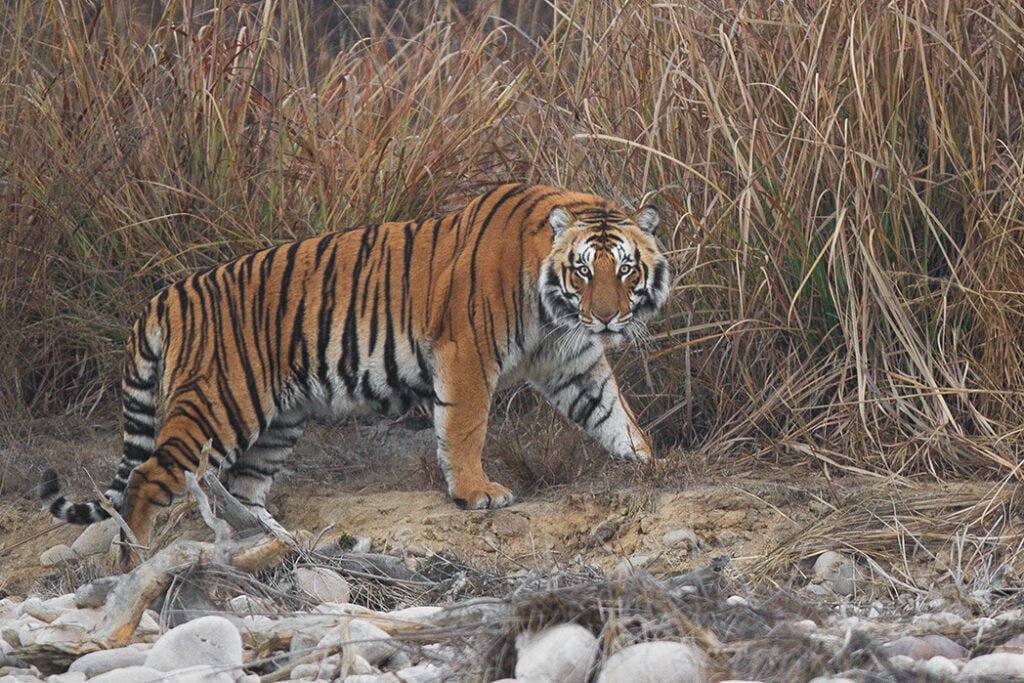Jim Corbett National Park, nestled in the picturesque landscapes of Uttarakhand, India, is a sanctuary that embodies the perfect blend of history, wildlife, and natural beauty. As we embark on this journey through time, we delve into the captivating story behind this iconic national park. Join us as we unravel the rich tapestry of the History of Jim Corbett National Park, tracing its origins, milestones, and the enduring legacy that has made it a sanctuary for both the wild and the curious.
This article delves into the captivating history of this renowned park, highlighting its evolution, significant milestones, and the crucial role it plays in the conservation of our natural heritage.
Table of Contents
History of Jim Corbett National Park:
Early Days: Pre-1947
Jim Corbett National Park’s history can be traced back to the pre-Independence era of India. Initially known as Hailey National Park, it was established in 1936. This move was significant as it marked India’s first concerted effort to conserve its diverse wildlife and natural ecosystems.
The park’s creation was primarily driven by the need to protect the Bengal tiger, which was facing a severe population decline due to rampant hunting. The British colonial government recognized the importance of preserving this magnificent species and its habitat. Consequently, Hailey National Park was born, spanning approximately 323.75 square kilometers.
Renaming and Tribute
In 1954, Hailey National Park underwent a name change that would etch it into history books forever. It was renamed Jim Corbett National Park, in honor of a man who had left an indelible mark on wildlife conservation in India – Jim Corbett himself.
Jim Corbett, a British hunter turned conservationist, had spent a significant part of his life in the Kumaon region of India. His deep connection with the wilderness and his relentless efforts to protect wildlife were exemplified in his writings, most notably in his book “Man-Eaters of Kumaon.” This literary work not only narrated his thrilling encounters with man-eating tigers but also raised awareness about the need to safeguard India’s natural heritage.
The renaming of the park was a fitting tribute to Jim Corbett’s legacy, as it symbolized India’s commitment to wildlife conservation.
Evolution Over the Years
Jim Corbett National Park has not remained static over the decades. It has witnessed significant expansion, increasing its boundaries to encompass approximately 520 square kilometers of pristine wilderness. This expansion was necessary to provide more room for the flourishing wildlife population that called the park home.
The Flora and Fauna
Diverse Ecosystems
One of the most captivating aspects of Jim Corbett National Park is its diverse ecosystems. It includes a wide range of landscapes, from hilly terrain to marshes, riverine belts, and expansive grasslands. This diversity supports an incredible variety of flora and fauna, making the park a hotspot for biodiversity.
Majestic Tigers

Jim Corbett National Park is world-renowned for its Bengal tiger population. The park’s tiger reserve area is dedicated to the conservation of these magnificent big cats. Stringent measures are in place to protect them from poaching and habitat destruction. As a result, the park has become one of the most successful tiger conservation areas in India.
To read more about big cats of Corbett Park Click Here….
Conservation Efforts
Project Tiger
Jim Corbett National Park was one of the pioneering locations for Project Tiger, a landmark conservation effort launched in 1973. This initiative aimed to safeguard the endangered Bengal tiger and its habitat. Jim Corbett’s active participation in Project Tiger has been instrumental in the revival of the tiger population, setting an example for tiger conservation efforts across the country.
Elephant Reserves
In addition to tigers, the park is also home to a significant population of Asian elephants. Recognizing the importance of conserving these gentle giants, Jim Corbett National Park has designated elephant reserves to ensure their safety and well-being.
Visitor Experience
Jim Corbett National Park offers a unique and immersive experience for visitors. The park provides a range of activities that allow people to connect with nature responsibly.
From thrilling safaris that offer a chance to spot tigers and other wildlife to bird-watching and photography, there’s something for everyone. Visitors can explore the park’s natural beauty while contributing to its conservation efforts.
The history of Jim Corbett National Park is not just a narrative of its past but a testament to India’s dedication to preserving its natural heritage. From its inception as Hailey National Park to its present status as a thriving wildlife sanctuary, the park has evolved significantly. With its rich biodiversity, successful conservation efforts, and engaging visitor experiences, Jim Corbett National Park continues to be a symbol of our commitment to wildlife preservation.
To book your first experience of jungle safari in Corbett park Click here….